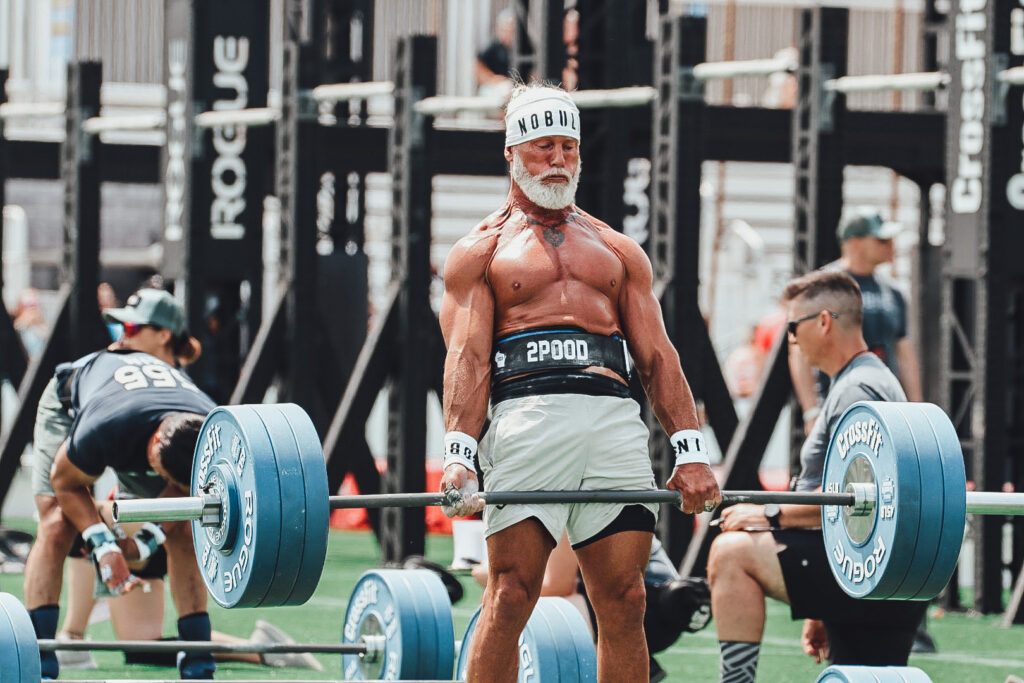
Grinding vs Explosive Breathing
Written by Fritz Nugent
There are a number of different breathing styles. One can argue infinite variations. For many people, CrossFit might be their first formal exploration into human movement, training, and competition. Therefore, getting down into the weeds of how one should breathe during different tasks may seem like a foreign topic. Some might think that breathing is not even worth exploring. However, I think breathing well is GOLD. Here me out.
I competed at a high-level in track and field, and afterwards ended up coaching nationally and internationally competitive track and field athletes. Even when coaching those athletes (and watching them get coached), breathing is not discussed until athletes are already very good. Like national and world champion good. Using breath at the right time and matching breathing to the situation or task at hand provides a leg up in competition.
At the time, I was a young coach and didn’t realize that I was watching a rarity – specific breathing paired with specific tasks. Now, after coaching for almost 15 years, I appreciate more than ever the importance of breathing and how it affects bracing, posture, performance, and safety, which in turn supports longevity.
Grinding vs Explosive Breathing
Today I’d like to focus on two main breathing styles that you can practice and utilize to help you improve your bracing and performance:
- explosive breathing, and
- the grinding breath
Explosive Breathing
Explosive breathing is optimally paired with explosive tasks like kettlebell swings, sprinting, jumping, punching, kicking, throwing, and the Olympic lifts.
To perform this breath, inhale deeply into your belly and chest to get a full intake of air, and when you let the air out, purse your lips to limit how much air can exit from your body at once, and force that air out powerfully. Do not let all your air out. Instead, govern your exhale so you force out 15-30% of your “air tank”. You can time this exhale with maximally explosive portions of different movements. For most of these tasks/lifts, the point of maximally forceful exhalation should be timed with the violent explosive extension of the hips and knees (think hip extension on kettlebell swings, jumping, etc.)
Grinding Breathing
The grinding breath is optimally paired with grinding tasks, like heavy deadlifts, squats, and pressing.
To perform this breath, inhale deeply into your belly and chest to get a full intake of air, and when you let the air out, purse your lips again, similarly to the explosive breath, but this time, forced air out slowly so that your exhale lasts the entire duration of your upwards drive/push/pull action on your lift. This constitutes the entire pull of a deadlift from the floor all the way up to lockout. This breath might take 5-8 seconds to match a maximally challenging 1RM deadlift.
For a maximally heavy back squat, you may need to inhale at the top of the lift, and then descend on a breath hold, and then initiate your upward drive while still maintaining that breath hold, and right when you arrive at or slightly pass your sticking point, beginning that forceful and controlled grinding breath back up to the top of the lift.
Final Thoughts
Try these two distinctly different breathing patterns, match them to their appropriate lifts, and see how you feel. Spend time practicing this skill with light to moderate loads. Once the habit is firmly ingrained into your brain and body, then you can more readily access these techniques when the loads are heavy. Do not expect to have success with these breathing styles for the first time on maximally heavy attempts. You won’t. You might even injure yourself. Like any other skill, breathing takes practice and repetition to reap the benefits.
Also Check Out…
I Started Nasal Breathing – Now What?
4 Myths About Nasal Breathing
The Diaphragm is a Muscle – Train It!
Hello! I’m the author, Fritz. If you have questions about this, respond to this comment!